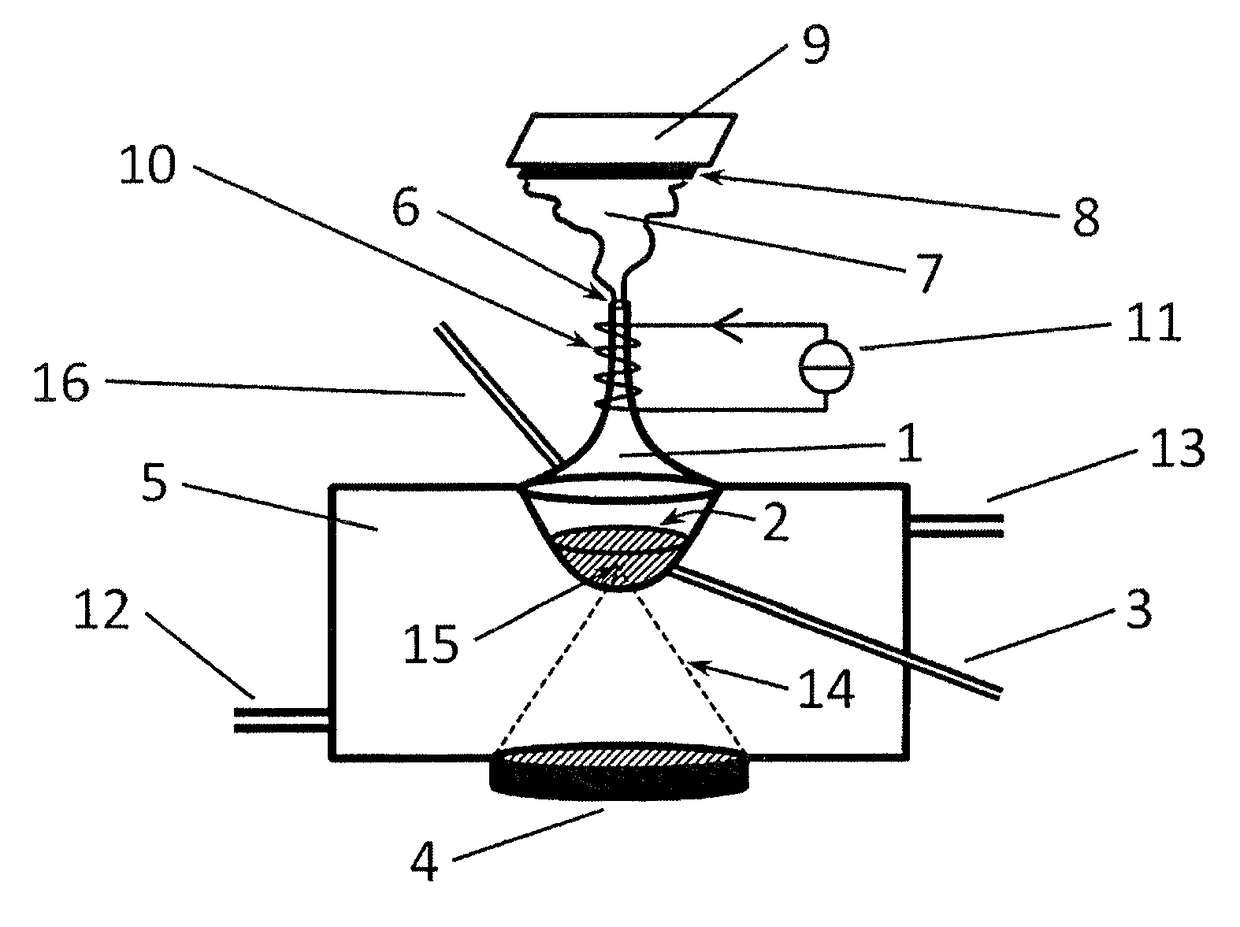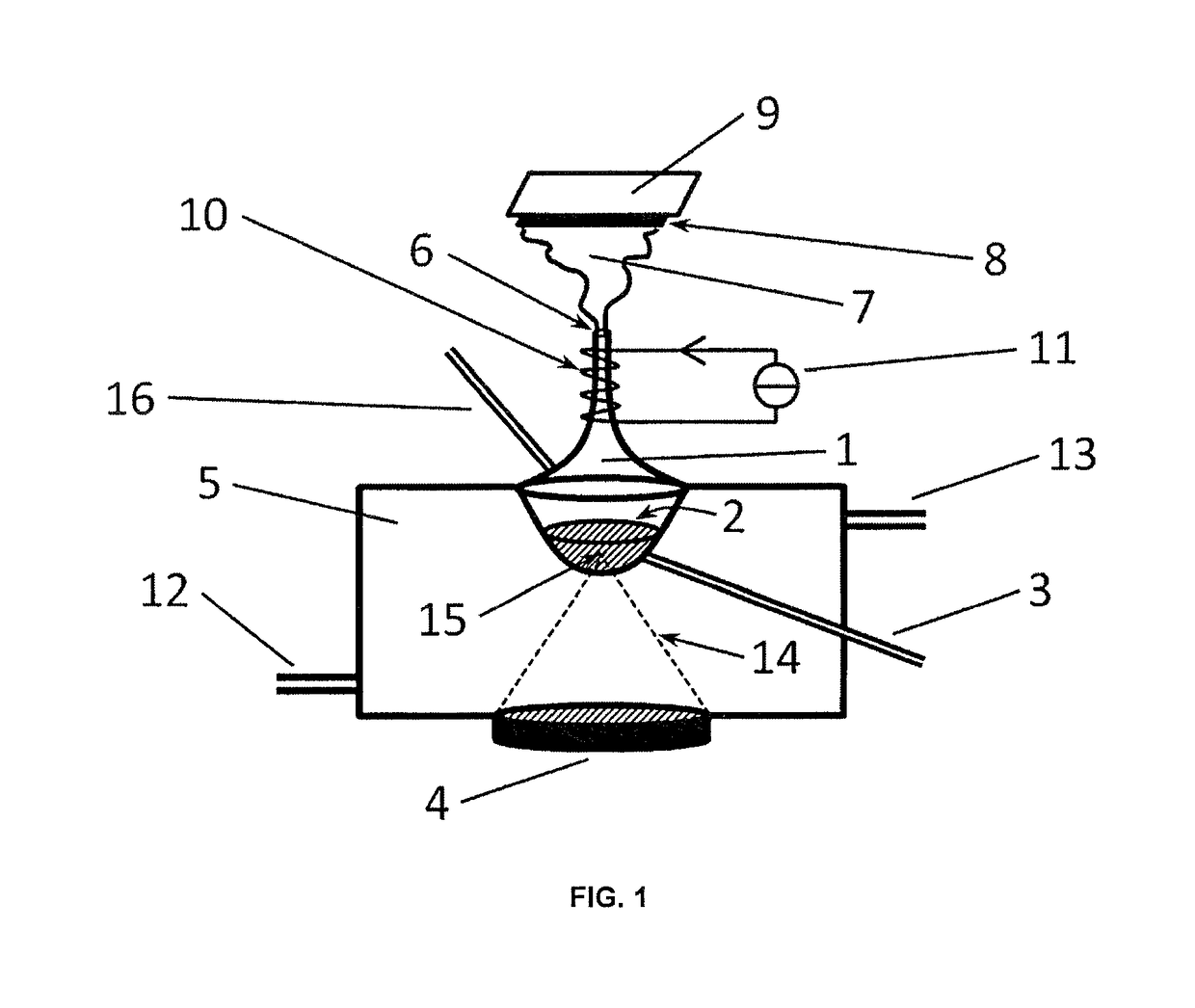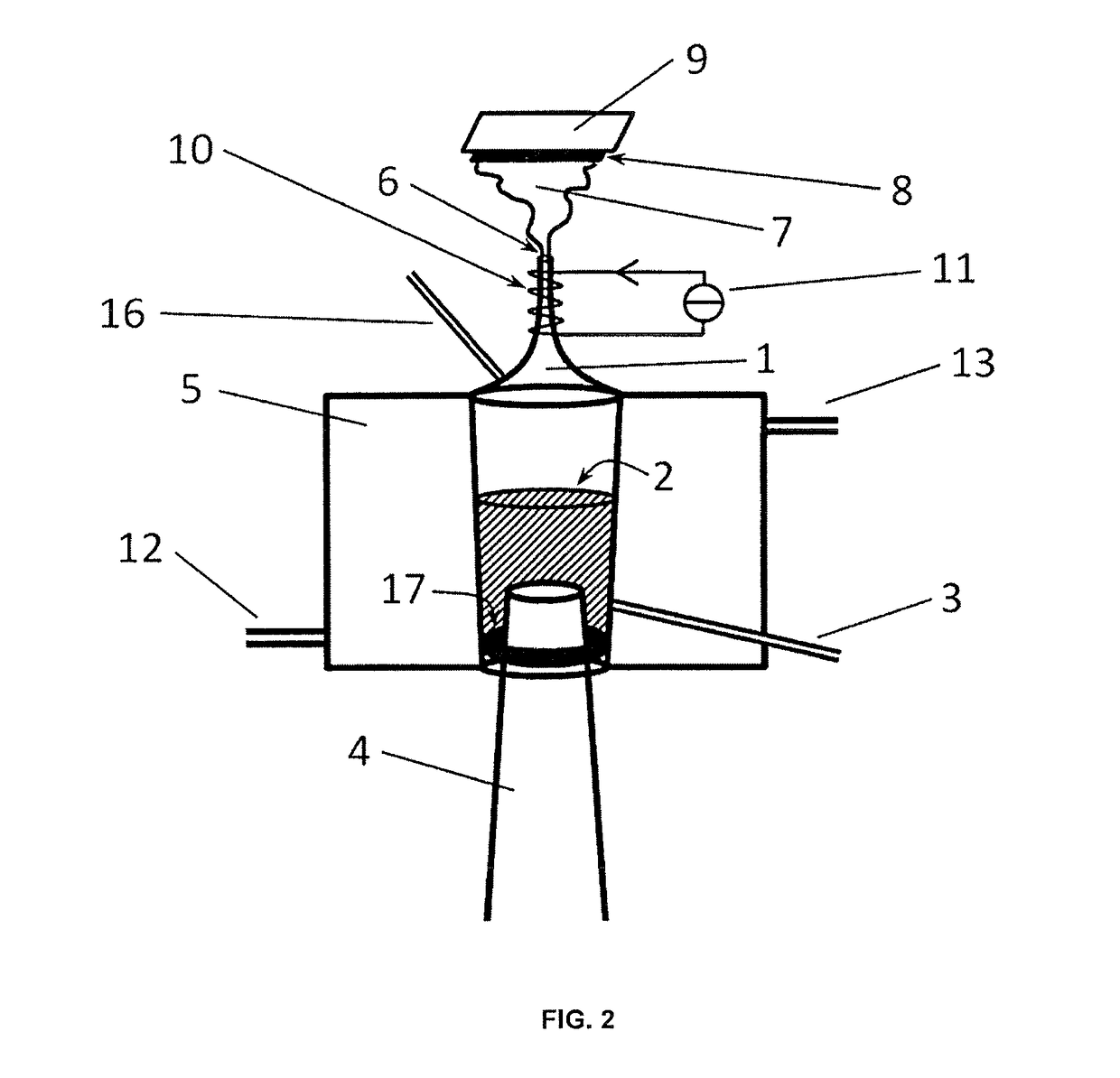Method and device for polymerizing a composition comprising hydridosilanes and subsequently using the polymers to produce silicon-containing layers
a technology of hydridosilane and polymerization method, which is applied in the direction of semiconductor devices, liquid/solution decomposition chemical coatings, coatings, etc., can solve the problems of time-consuming and labor-intensive photopolymerization methods, and high cost of uv irradiation
- Summary
- Abstract
- Description
- Claims
- Application Information
AI Technical Summary
Benefits of technology
Problems solved by technology
Method used
Image
Examples
Embodiment Construction
[0098]The device for carrying out the method according to the invention according to FIG. 1 comprises a reaction vessel (1), containing a composition (2) that includes at least one hydridosilane that is dissolved in at least one organic and / or inorganic solvent, or at least one hydridosilane that is already present in liquid form without solvent, wherein the hydridosilanes comprise at least one linear and / or branched hydridosilane of the general formula SinH2n+2, where n≥3, and / or a cyclic hydridosilane of general formula SinH2n, where n≥3, and / or including the above-mentioned hydridosilane solution or the pure already liquid hydridosilane, to which at least monosilane-containing and / or disilane-containing and / or a boron-containing dopant and / or a phosphorus-containing dopant and / or a noble gas from the group Ar, He and / or nanoparticles and / or a polymerization initiator and / or a catalyst and / or surface tension-modifying agents are added. The device furthermore comprises an ultrasoun...
PUM
| Property | Measurement | Unit |
|---|---|---|
| molar mass | aaaaa | aaaaa |
| molar mass | aaaaa | aaaaa |
| temperatures | aaaaa | aaaaa |
Abstract
Description
Claims
Application Information
 Login to View More
Login to View More - R&D
- Intellectual Property
- Life Sciences
- Materials
- Tech Scout
- Unparalleled Data Quality
- Higher Quality Content
- 60% Fewer Hallucinations
Browse by: Latest US Patents, China's latest patents, Technical Efficacy Thesaurus, Application Domain, Technology Topic, Popular Technical Reports.
© 2025 PatSnap. All rights reserved.Legal|Privacy policy|Modern Slavery Act Transparency Statement|Sitemap|About US| Contact US: help@patsnap.com



